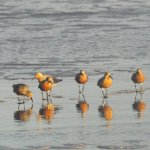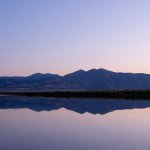The third Friday in May is celebrated as Endangered Species Day. Established in 2006 by the United States Congress, Endangered Species Day celebrates the progress made to protect imperiled wildlife since the creation of the Endangered Species Act (ESA) in 1973. More than 1,300 taxa of plants and animals are currently listed as either threatened or endangered in the United States. Conservation actions carried out under the ESA have successfully prevented the extinction of 99 percent of the listed taxa.
Among shorebirds, the ESA lists the Eskimo Curlew (Numenius borealis), Hawaiian Stilt or Ae’o (Himantopus mexicanus knudseni) and the Great Lakes breeding population of Piping Plover (Charadrius melodus) as Endangered. Meanwhile, the Atlantic and Northern Great Plains population of Piping Plover, the rufa subspecies of Red Knot (Calidris canutus), and the Pacific coast population of Snowy Plover (Ch. nivosus) are all considered as Threatened. Although it may be too late for the Eskimo Curlew (it is most likely extinct), the Ae’o has been proposed for downlisting from Endangered to Threatened due to improvement in its status as a result of conservation actions.
A further six shorebird species that do not occur in the United States are listed as Endangered under the ESA. Benefits to such listings can include prohibitions on trade and other actions that would harass or harm a species, helping to ensure that people under United States jurisdiction do not contribute to the further decline of listed species. ESA listing can also generate conservation benefits such as increased awareness of listed species, research efforts to address conservation needs, or funding for in-situ conservation of a species in its range countries.
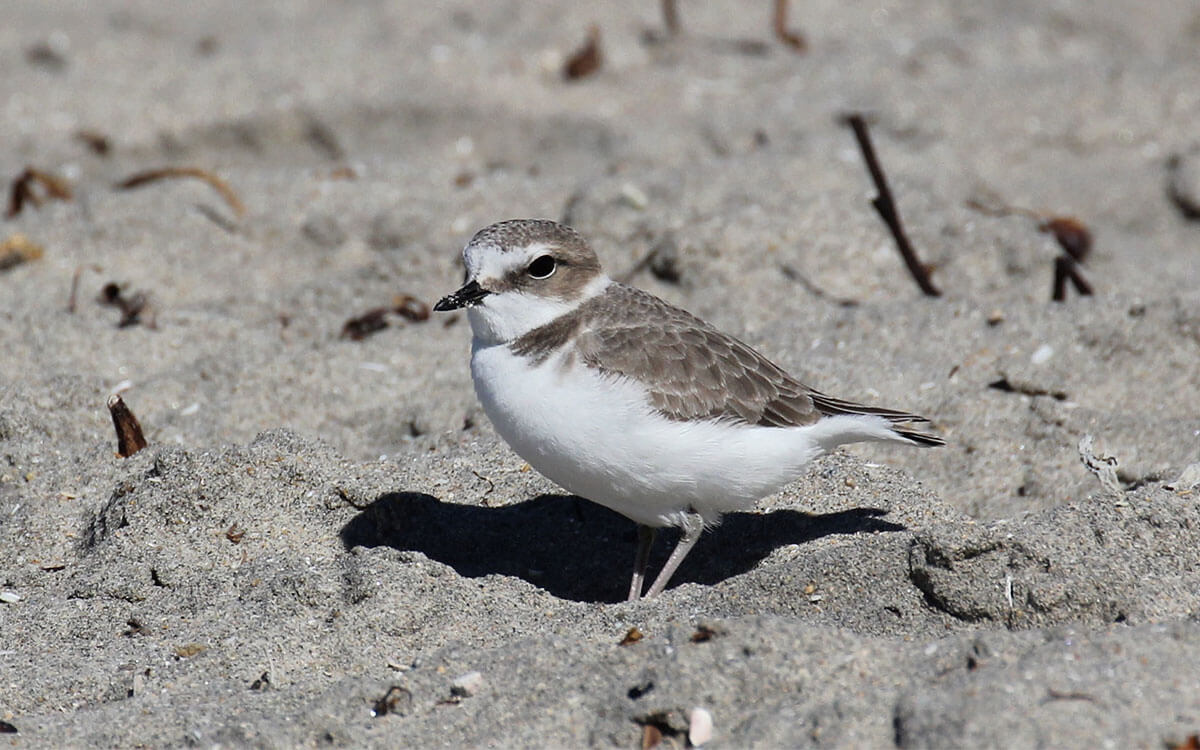
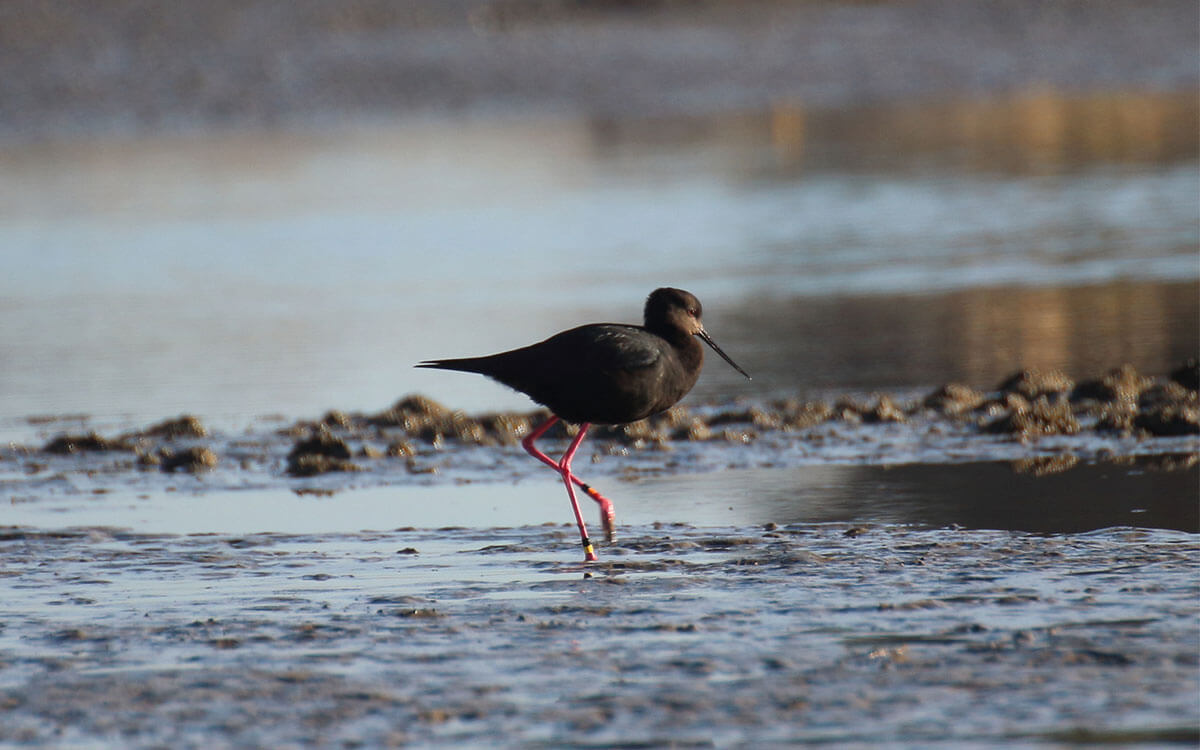
Left: A Snowy Plover. Photo: Kim Stark. Right: Black Stilt at Canterbury, New Zealand. Photo: Jacob Littlejohn.
The six non-US listed species are Black Stilt (H. novaezelandiae), Canarian Black Oystercatcher (Haematopus meadewaldoi), Jerdon’s Courser (Rhinoptilus bitorquatus), New Zealand Shore Plover (Thinornis novaeseelandiae), Nordmann’s Greenshank (Tringa guttifer) and Slender-billed Curlew (N. tenuirostris). A seventh species, Chatham Island Oystercatcher (H. chathamensis) is a candidate for listing. Unfortunately, the Canarian Black Oystercatcher is now considered Extinct, and the Slender-billed Curlew is most likely part of the same club, together with the Eskimo Curlew. Of the remaining five species, two are considered Critically Endangered (Black Stilt, Jerdon’s Courser) and three are Endangered on the IUCN Red List.
The ESA was enacted to stop species joining the ranks of now extinct species such as the Passenger Pigeon (Ectopistes migratorius) and Carolina Parakeet (Conuropsis carolinensis). Unlike the infamous Dodo (Raphus cucullatus), these are species lost just one or two human generations before the present. When my maternal grandfather was born, he could have seen Martha, the last Passenger Pigeon. When my father was born, he may still have had a chance to see Carolina Parakeet or Canarian Black Oystercatcher, and most certainly Eskimo Curlew. By the time my oldest son was born, Slender-billed Curlew was on the brink and there have been no documented records of the species since before the birth of my youngest son. Thinking of extinctions in these terms makes me realise how much we’ve lost in so little time.
The extinction of a species may seem inconsequential in the grand sum of biodiversity, but each loss, especially of a migratory species, represents an unravelling of the fabric of the world around us, and a loss of connections across borders and between cultures. The authors of the ESA recognized this, noting that the rich natural heritage of the US is of “esthetic, ecological, educational, recreational, and scientific value to our Nation and its people”. The same can be said for biodiversity throughout the world, and Endangered Species Day is increasingly being celebrated globally. For more information about the day and how to participate, see https://www.endangered.org/campaigns/endangered-species-day/
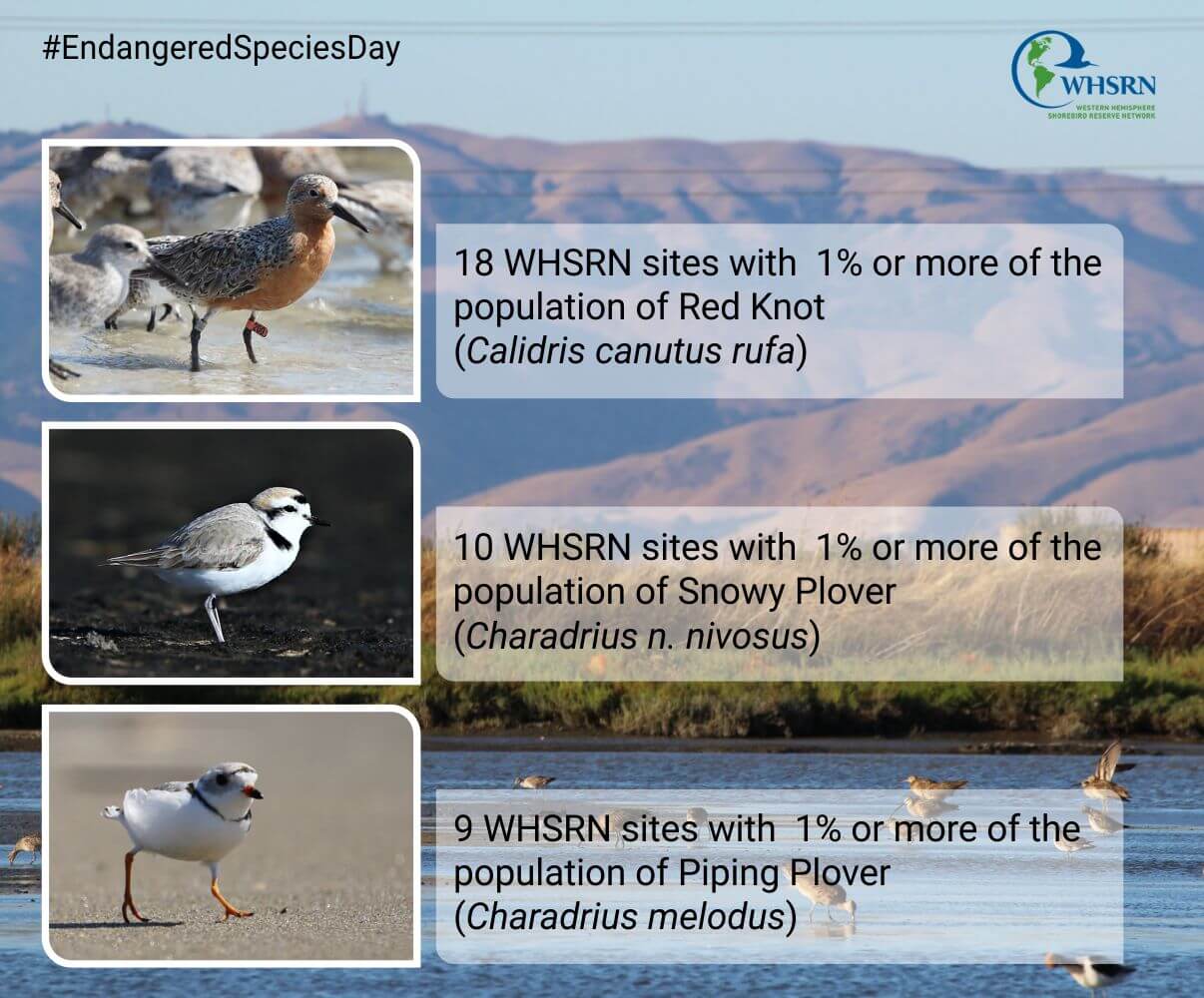
Cover Photo: Red Knots at WHSRN Site Bahía de San Antonio, Argentina. Photo: Diego Luna Quevedo.





